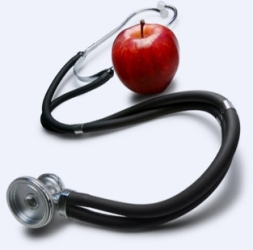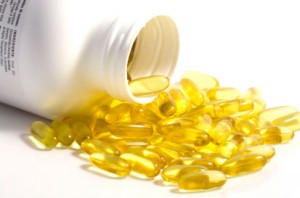 Many things come with age. Unfortunately, some of those are narrowed arteries and high cholesterol. These days, being prescribed medication for high cholesterol is almost a given, maybe even a right of passage from middle age to senior citizen-hood. But let’s face it, no one likes to take medication and many people would like to try supplements and lifestyle changes before they jump on the prescription bandwagon.
Many things come with age. Unfortunately, some of those are narrowed arteries and high cholesterol. These days, being prescribed medication for high cholesterol is almost a given, maybe even a right of passage from middle age to senior citizen-hood. But let’s face it, no one likes to take medication and many people would like to try supplements and lifestyle changes before they jump on the prescription bandwagon.
So first, let’s define a few things. When you get a lipid panel here are things you will see and what your target numbers are:
- LDL = bad cholesterol Goal: 70-100 mg/dL
- HDL=good cholesterol Goal: Greater than 40 mg/dL for men, greater than 50 mg/dL for women
- Total cholesterol = combination of your LDL/HDL and other components Goal: Less than 200 mg/dL
- Triglycerides = Fat that your body stores Goal: Less than 150 mg/dL
Fish oil is typically used to treat high triglycerides. They are loaded with omega-3’s and can sometimes reduce triglycerides from twenty to fifty percent. At higher doses, some people have found they have an increase in their LDL (bad) cholesterol, so getting follow up lipid panels is important.
Usually doses under 3 grams or 3000 milligrams per day would be appropriate. Taking 1000 mg three times a day would be ideal to minimize side effects. One of the most unpleasant side effects is fishy-tasting burps or a fishy aftertaste. I know, gross. This can be avoided by finding a product that specifically states that it does not cause it. Other options would be to take it with a meal or to freeze them.
If you want to get omega-3’s from your diet, try eating fish like herring, kipper, mackerel, salmon and trout. Omega-3’s in fish oil also have anti-inflammatory properties and can help prevent clotting.
Niacin (Vitamin B3) or niacinamide is a better option for people who need to lower their triglycerides and raise their HDL. Over-the-counter dosages are usually 250 mg, or less so you would need to take multiple tablets to achieve the desired effect. Doses of 1200 to 1500 mg per day are typical. With every drug comes side effects and niacin isn’t any different. Many people experience flushing and feel hot on their face, neck and chest. Start low and go slow increasing the dose to minimize the effects. You can also take aspirin about 30 minutes prior to your niacin. If you want more B3 in your diet, try eating more meat, beans, cereal grains, fish and niacin-fortified food.
Exercise and Good Nutrition
It has been proven that aerobic exercise increases HDL levels. So, here’s reason one million and one that you should get at least 30 minutes of physical activity a day most days of the week. This could be as simple as a walking or committing to a program like Courtney’s Summer Challenge.
As far as nutrition is concerned, focus on portion control and limiting fatty foods. If the people at the McDonald’s drive-thru know your name, that could mean trouble for your triglycerides. Nutritionists are fantastic resources and are considered preventative medicine by most insurances.
These supplements may not be enough to get you to the goal the doctor has set for you. If not, remember to bring your prescription formulary and work with your doctor to find an option that works best for you. All these changes could save your life.
Also Read:
Top 5 Foods to Lower Cholesterol
Simple Steps to Healthy Cholesterol Levels
Understanding Obesity Related Diseases: High Cholesterol

